Lesson 1: Displacement, Velocity, and Acceleration
Read and Discover
To describe how objects move, you can talk about thier distance, speed, and acceleration. Click on each part of the interactive image to learn more. Answer the questions are you go along.
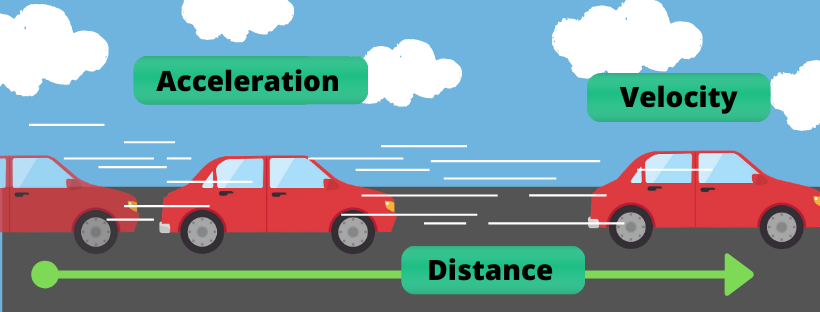
Acceleration
As objects move, they often speed up or slow down, changing velocity. This is called acceleration. Acceleration is a vector that tells how velocity changes over time. If the directions for velocity are not given, you can assume they go the same way.
To calculate acceleration (m/s²), first subtract the starting velocity from the final velocity to get the change in velocity (m/s²). Then divide this number by the amount of time (s) in which the change occurs.

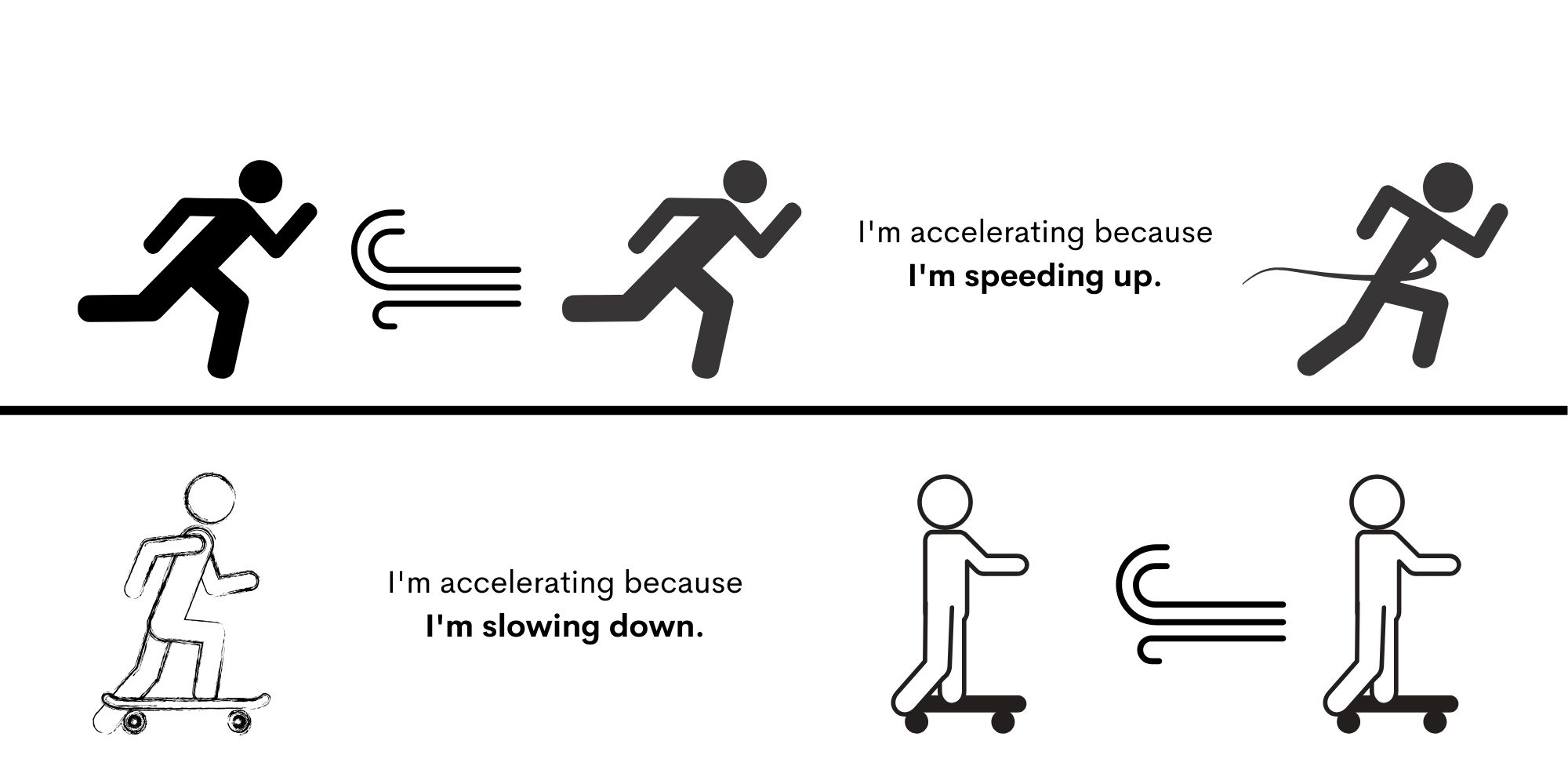
Use the formula to calculate the acceleration of a fire truck with a starting velocity of 20 m/s that gets a fire call and then speeds up, reaching its final velocity of 40 m/s in 5 seconds (s). Answer:_____________ m/s²
Moving objects accelerate if they speed up (positive acceleration) or slow down (negative acceleration, or deceleration).
Answer the questions.
- With positive acceleration, what is happening with velocity?
- If velocity decreases, is acceleration positive or negative?
Distance/Displacement
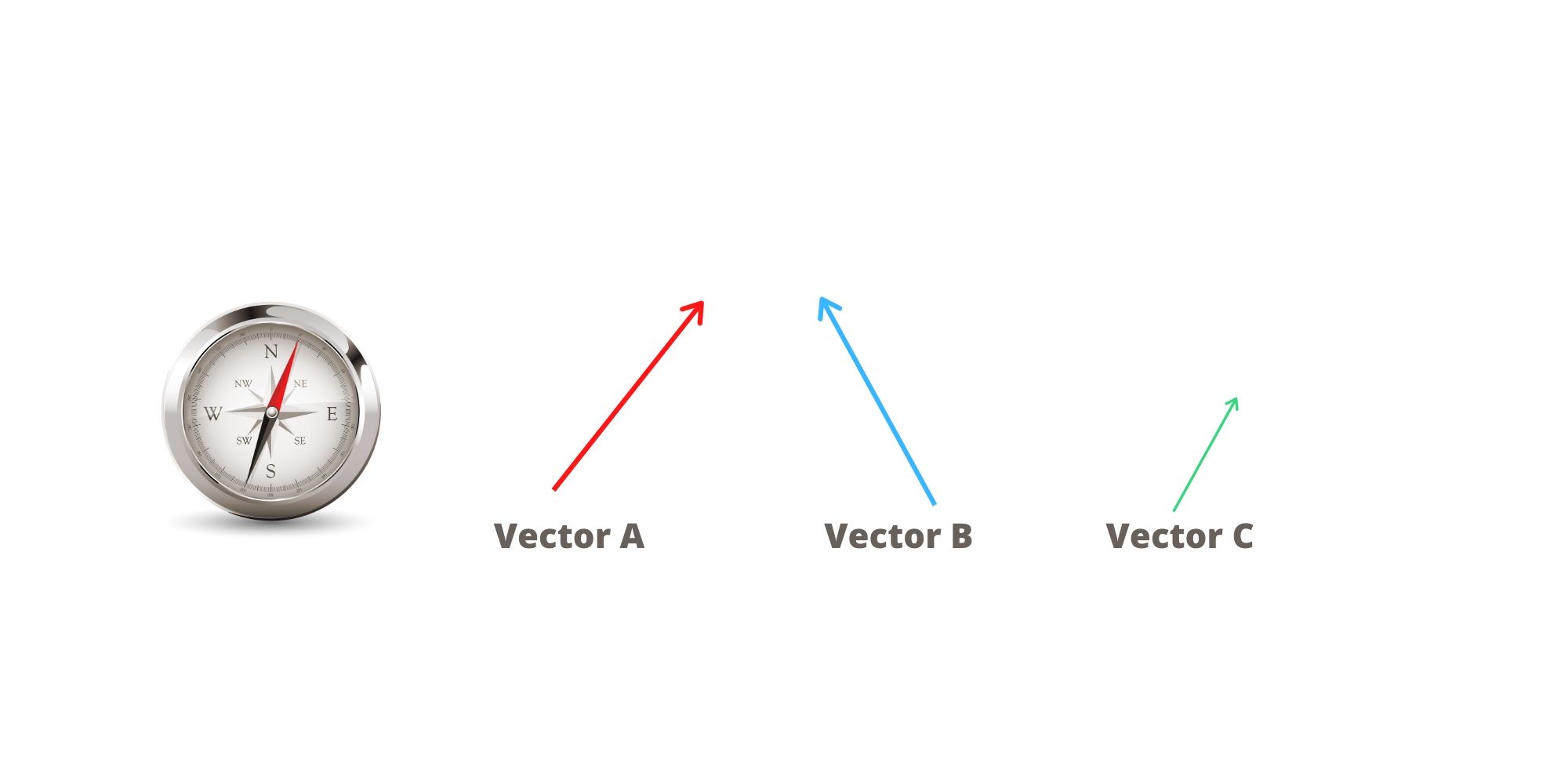
Distance is how far an object has gone. In physical science, displacement is used instead of distance. If you draw a straight line between an object's start and end points, the length of that line is the object's displacement, no matter how far it actually went.
Distance and displacement are the same only when an object moves in one straight line.
Think about your home and your school. These buildings do not move. They are always the same distance apart, but the distance you go from home to school each day might change if you take different roads. The displacement is always the same, though—because you always start and end at the same places.
Displacement and distance are measured in meters (m). To describe displacement, you have to include both the distance and the direction traveled.
Displacement = 20 m southeast
Displacement is often shown with a vector—a line with an arrow at one end. The length of the vector shows the straight-line distance between the start and end points. Longer vectors mean more displacement. The arrow points in the direction from start to end.
Look at the three displacement vectors above. Vector A and Vector B have the longest lines, showing the most displacement, but they are not exactly the same: Vector A points northeast while Vector B points northwest. Vector C points northeast like Vector A, but it has about half the displacement of the other two vectors.
Vectors can be added or subtracted from each other. If you add two vectors of the same length pointing in opposite directions, you get zero. This is like taking one step forward and one step back. They cancel each other out.
Answer the questions.
- If you hike on a straight path up a mountain, are the distance and displacement the same? Why or why not?
- If you hike on a winding path up a mountain, are the distance and displacement the same? Why or why not?
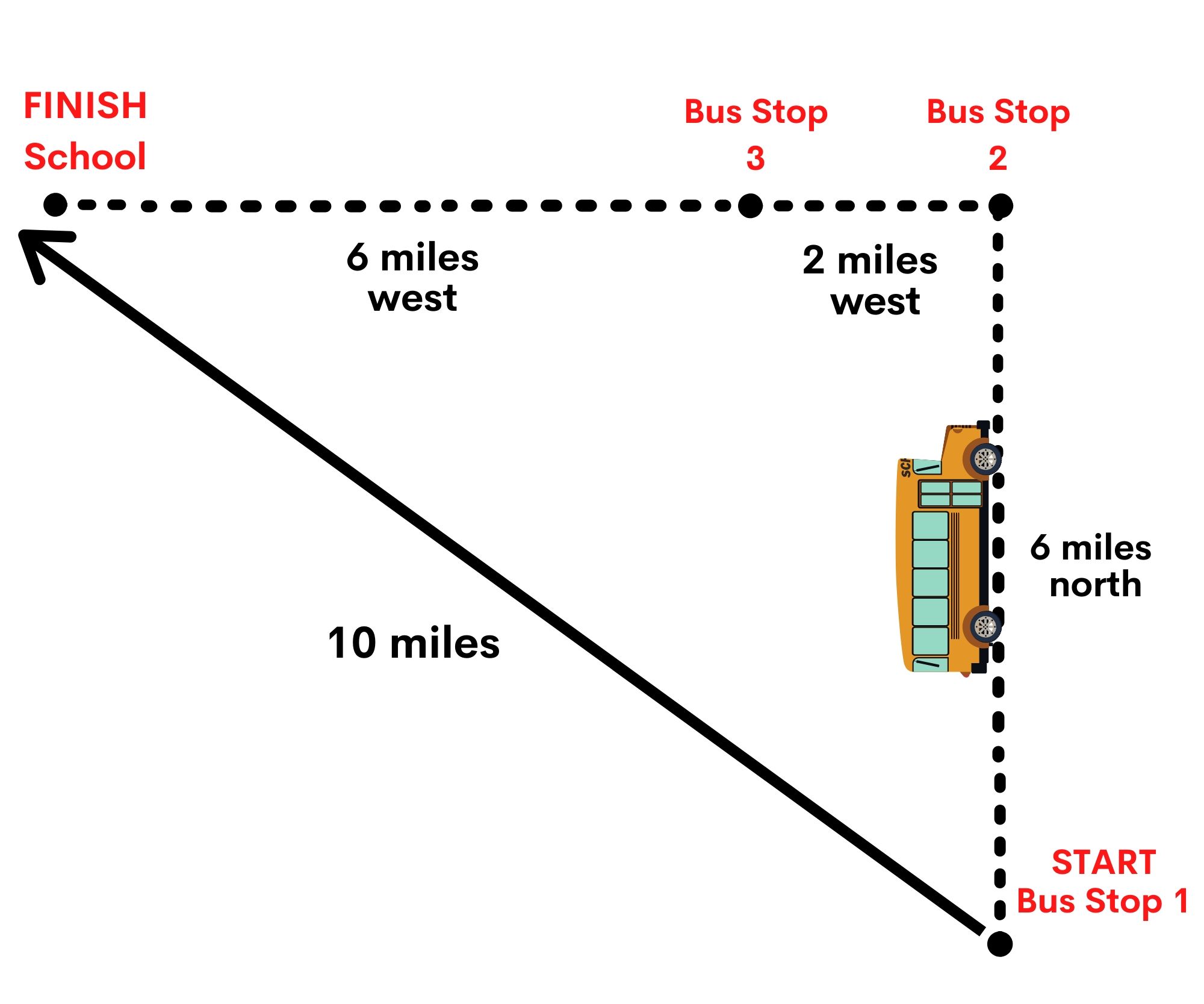
Imagine you take a bus to school and the driver gets lost. The driver wants to make sure everyone gets to school, but has no map. Write down what you think will happen if the bus driver only knows:
- The distance to the school.
- The displacement to the school.
Look at the map showing the route for this bus. The driver starts from bus stop 1, picks up students at stops 2 and 3, and then drops everybody off at school.
Answer the questions.
- How far does the bus drive (distance)?
- What is the displacement of the bus?
- Are distance and displacement the same? Why or why not?
Speed/Velocity
Speed tells how fast something is moving, but not the direction. One way to measure speed is in meters per second—how many meters (m) traveled in each second (s).
To calculate speed, the total distance traveled is divided by the total time.
Speed (m/s) = Distance (m) / Time (s)
If it takes 100 seconds (s) to walk in a straight line for 220 meters (m), the speed is 2.2 m/s.
2.2 m/s = 220 m / 100 s
In physical science, velocity is used instead of speed. Velocity tells the direction of a moving object along with its speed.
To calculate velocity, the total displacemenet of an object is divided by the total time—and then the direction is added.
Velocity (v) = Displacement (m) / Time (s) ~direction of travel~
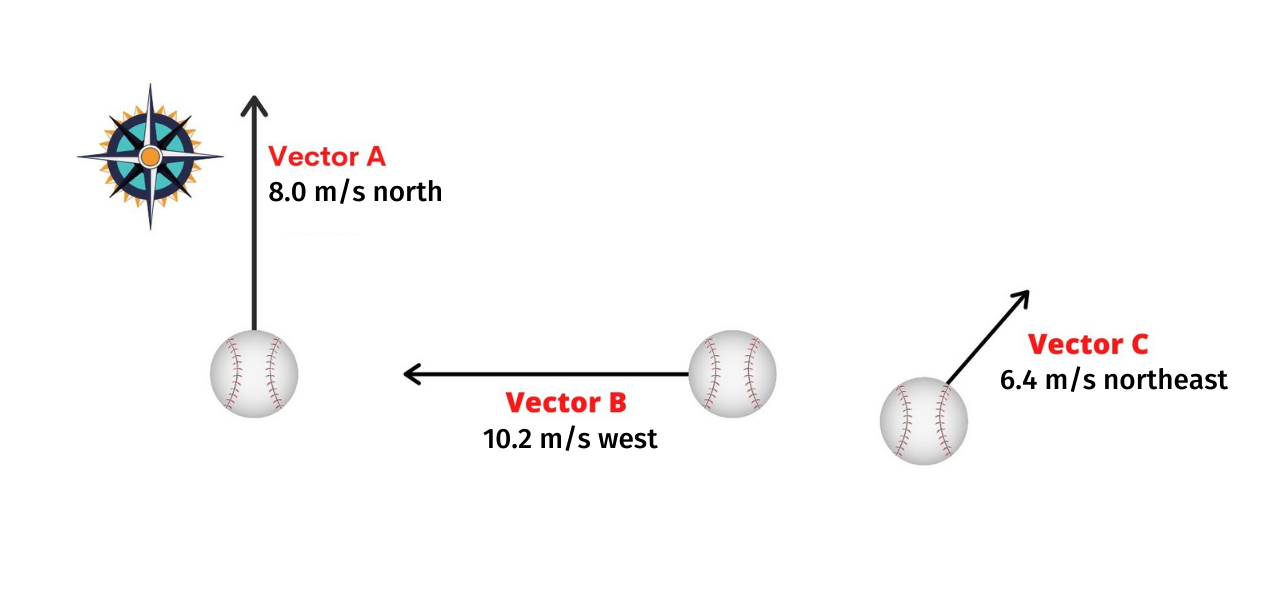
If you walk in a straight line east for 22 meters (m) in 10 seconds (s), your velocity is 2.2 m/s east.
2.2 m/s east = 22 m / 10 s
Velocity, like displacement, is shown as a vector. Two objects have the same velocity only if they go at the same speed and in the same direction.
Look at the velocities of three baseballs in flight.
Answer the question.
- Do any of these baseballs have the same velocity?
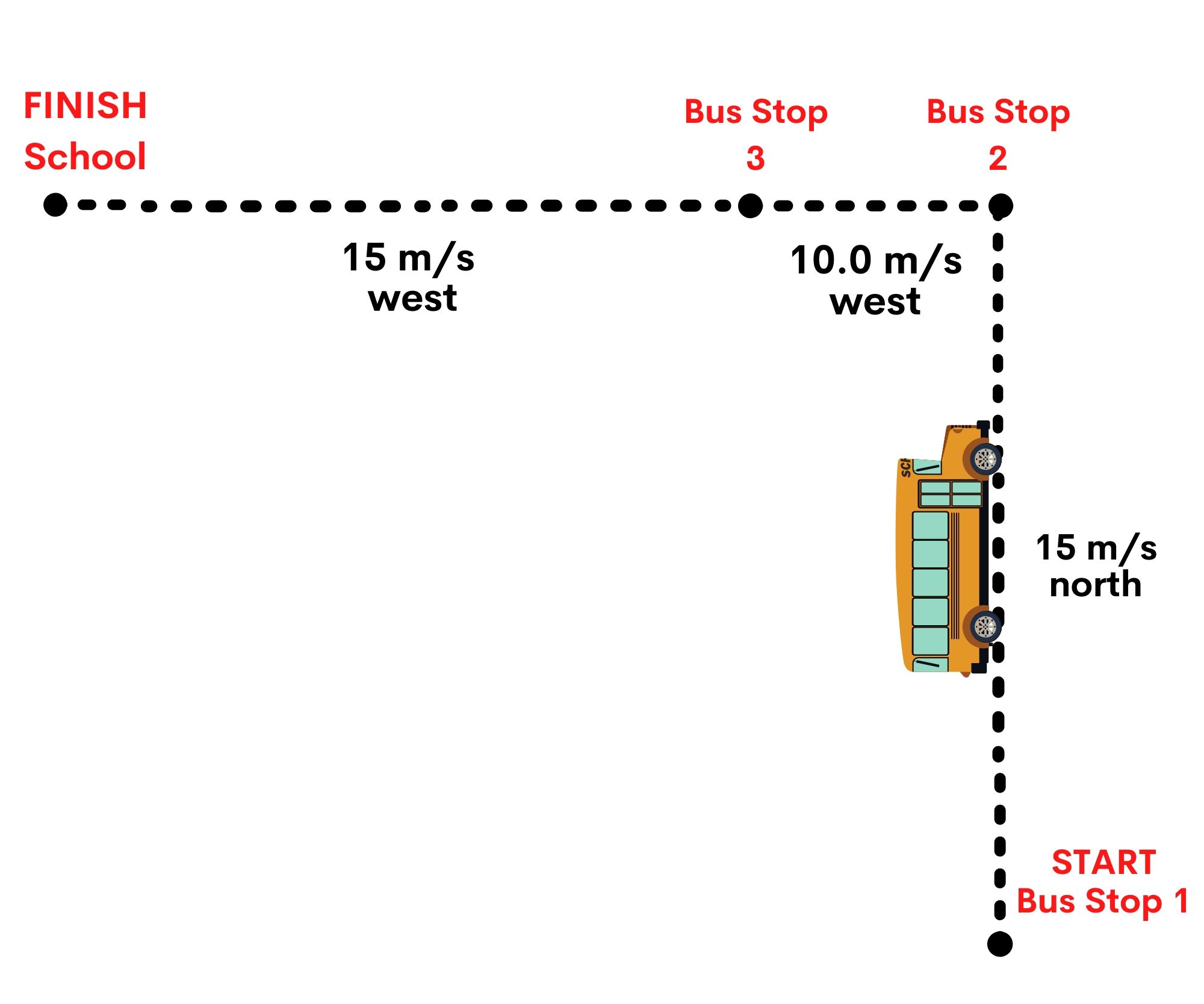
Now, imagine you are back on the bus going to school. The driver still does not have a map. Answer the questions.
- Will the bus probably get to school on time if the driver only knows the speed he has to go?
- Will the bus probably get to school on time if the bus driver only knows the velocity he has to go?
After getting everybody to school, the bus driver writes down the velocity vectors for each part of the route.
Look at the bus route and answer the questions.
- What part of the route has the lowest velocity?
- Are the velocities the same when you go from stop 1 to stop 2 as when you go from stop 3 to the school?
- What do the lengths of these lines, and the points of the arrows, say about displacement and direction?



